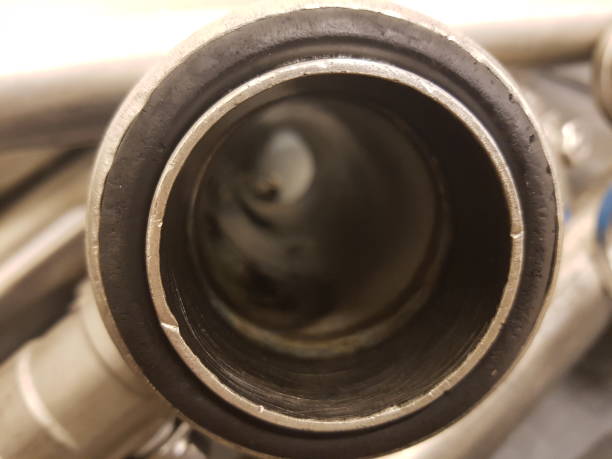
It is bad to have the head seal blowing. Very bad news. If your car may be failing, you must pay immediate attention. It is our belief that head gaskets can fail in seven different ways. Each of them is very bad for your engine. If you're seeing a sweet scenting white cloud, which is constantly following you all the time then you might have the wrong head gasket.
Typically head gaskets fail
Head gaskets usually fail because they fail because the gap between head and engine is expanding and they are unable to seal it. This problem can be exacerbated by motors that have an aluminum head and iron cylinder block. Certain motors are designed to have poor clamping forces from the headbolts or have headbolts that can warp. These motors have a poor image of failing.
The failure of a head gasket could result in a range of issues, such as:
1) Overheating
The head gasket's failure could be caused by an engine overheating one too numerous times (as due to a clogged radiator, leaky coolant or a malfunctioning fan. ), but a blown head gasket will also result in the engine overheating as well. Coolant or hot exhaust gas may leak from the engine, and then burn to steam.
The blown head gasket cost is able to increase substantially if the vehicle too hot. The steam can cause harm on the converter catalytic, or the heads of the alloy cylinders.
2) Loss Of Power
When the head gasket is damaged to the point that it allows the compressed air/fuel to be released, then the compression in that cylinder will be reduced. This decrease in compression will result in a rough running engine and an enviable decrease in engine power. This type of failure is accompanied with a noise that sounds like the sound of an exhaust.
3) Oil Contamination
The milky liquid that is visible on the cap of the oil dipstick can be an indication of a failed head gasket. Sometimes, it's referred to as "milkshake" as a joke. It is the result of coolant getting into the oil, and the reverse. Blown Head Gasket Fix isn't a definitive evidence that the gasket in the head has gone out of service, but is an indicator. Your engine should be removed to identify where the contamination originates.
With antifreeze contaminating the oil, driving could quickly destroy the engine's bearings. This Blown Head Gasket Solution, requires an oil change, an oil filter replacement or a full engine disassembly to make sure that the bearings aren't damaged and that all oil has been removed.
4) White Smoke
A damaged head gasket frequently results in huge clouds of sweet smelling white smoke coming out of the exhaust. This is caused by antifreeze leaking past the gasket and into the tanks, which are transformed into steam during the process of combustion. Less common, but still likely, is the leak from an oil path through the cylinder that can cause blue smoke.
The type of leaks in gaskets will allow combustion pressure into the cooling system, or oil breather system. If a radiator hose suddenly blows off its water outlet or the dipstick doesn't remain in place, it could be the cause.
5) External Leaks
If the head gasket ruptured between the water passage or oil passageway and the outside of the engine, it can result in straightforward leak of coolant or oil. This is the least dire case of a damaged head gasket, however it's still dangerous.
It may not show up in a way that is immediate (other than causing an obnoxious mess) however if the coolant level is allowed to drop too far, it can lead to severe engine problems. Leaking oil could also trigger an unpleasant smell and may even cause fire when it is absorbed by hot exhaust.
Controlling Head Gasket Problems
The cost of a few dollars for prevention is much superior to the a thousand dollar cure when it comes the head gaskets. While replacing the head gasket can be relatively inexpensive, the labor-intensive repair required to replace it can dramatically increase the cost head gasket replacement cost especially on newer cars.
Failures of the head gasket are typically due to repeated overheating or driving when your car is become overheated. The best method to avoid a head gasket breakdown is to check that your cooling system is in good condition. If your vehicle does start to boil over take it off, then let it cool down for a minimum of an hour and then refill your radiator before proceeding.
It's easy to test the cooling system. Make sure there's no leaks. Also, make sure your thermostat is set to open, and that coolant has been replenished to the proper amount. Make sure that either the electric or mechanical fan is in operation, and has all its blades. The fan should also be fitted with a shroud that can increase the efficiency.
If you suspect the head gasket is failing, the scientific test is to check for combustion gasses inside the cooling unit. It will reveal the extent of leakage of compression in the cooling system and that is, if the head gasket has been damaged. The old method is to take off the cap on your radiator and then start the car and then check for bubbles.
In the absence of gas within the cooling system will be unable to tell whether the head seal is in good working order.
Some older head gaskets can simply fail due to being of a poor design or aren't strong enough for the application. The older metal gaskets were more prone to failure, as they could only endure a certain amount of time getting heated before they cooled down. Today, modern MLS (multiple layer steel) replacement gaskets are now readily available for all applications they are more reliable than the gasket model that was originally used.
